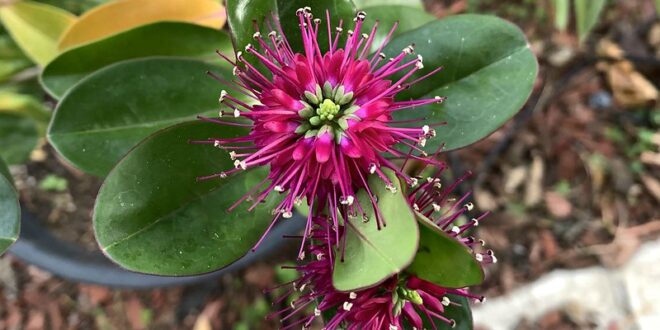Hebe speciosa, its many cultivars and hybrids are very popular garden plants in area with suitably mild temperate climates. They appeal because of their lush evergreen foliage, showy flowerheads, long blooming season and ease of cultivation. They are used to form borders, low hedges, bushes and potted patios for patios and terraces. They are ideal for coastal gardens due to their resistance to salinity and wind.
Hebe speciosa is a species of flowering plant in the plantain family known by the common names New Zealand hebe, showy hebe, showy-speedwell, and the Maori names Titirangi and Napuka. It is native to New Zealand.
This hebe is a shrub reaching heights between one and two meters. Its evergreen leaves are dark green, shiny, and quite thick, usually measuring 2 to 5 centimeters long. The inflorescence is up to 8 centimeters long and densely packed with pale pink to bright magenta flowers. Each flower is just under a centimeter wide and has a short throat spreading into a four-lobed corolla. Two very long stamens protrude from the throat of each flower, giving the inflorescence a whiskery look. The fruit is a capsule containing flat, smooth seeds.
Growing Tips
- Hebe speciosa prefers a light shade exposure. They resist light and occasional frosts.
- They need well-drained soil with abundant organic matter. Planting is done in autumn or spring.
- Water regularly throughout the year so that the substrate does not dry out completely; never flood.
- Fertilize every 15 days in summer with mineral fertilizer and in late winter with compost
- Prune faded flowers and do light pruning in early spring to strengthen the plant.
- They are resistant plants to the usual pests and diseases.
- They are propagated by division and by cuttings in the fall and from seed sown in the seedbed in the spring.








